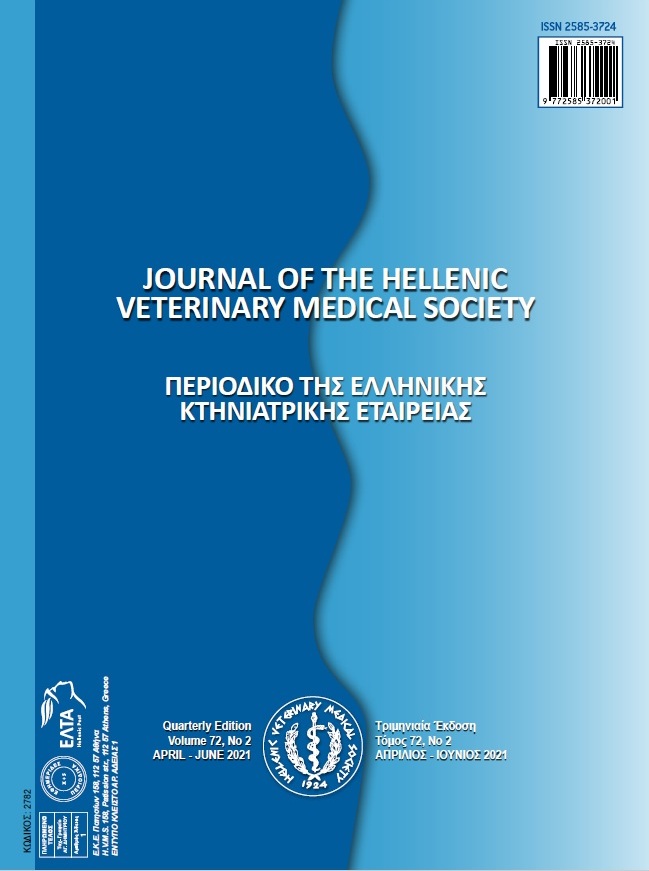Phenotypic and Molecular Characterization of Vibrio Species Isolated from Fish markets in Egypt
Abstract
Vibriosis is considered a worldwide, threatening bacterial disease that affects mariculture, with high mortalities and severe economic losses. Some Vibrio species have been frequently involved in outbreaks of foodborne diseases worldwide. The Genus Vibrio includes over eighty-five species present in marine and natural habitats of seawater, and the species are widely distributed throughout the world. This work aimed to isolate Vibrio species from different markets in Kafr EL-Sheikh Governorate, representing 40% of Egypt’s fish production. Samples of Nile tilapia, (Oreochromis niloticus), grey mullet (Mugil cephalus) and African sharptooth catfish (Clarias gariepinus) were collected alive and examined for Vibrio species. Isolation and identification of Vibrio species were made using colonial morphology and biochemical characteristics, then confirmed using 16S rRNA gene-specific for the genus Vibrio and multiplex PCR using species-specific primers. 52 (34. 6%) Vibrio isolates were obtained from examined fishes. The highest incidence of Vibrio species was detected in C. gariepinus (64%), followed by M. cephalus (36%) and then O. niloticus (24%). In the case of C. gariepinus, V. alginolyticus was the most predominant species (32%), followed by V. fluvialis (12%), V. cholerae, V. parahaemolyticus (8%), and V. splendidus (4%). In the case of O. niloticus, the predominant Vibrio species were V. alginolyticus (12%), followed by V. parahaemolyticus (5. 33%), V. cholerae (4%), and then V. splendidus and anguillarum (1. 33%). In M. cephalus, V. alginolyticus also wasthe predominant species (14%), followed by V. cholerae (12%), V. parahaemolyticus, V. fluvialis (2%), and V. splendidus (2 %). V. alginolyticus, V. cholerae, and V. parahaemolyticus were found to produce PCR products of 737, 304, and 897 bp, respectively. This study highlights the incidence of Vibrio species in fish in Egypt.
Article Details
- Zitationsvorschlag
-
GOBARAH, D., HELMY, S., MAHFOUZ, N., FAHMY, H., ABOU ZEID, M., & MOUSTAFA, E. (2021). Phenotypic and Molecular Characterization of Vibrio Species Isolated from Fish markets in Egypt. Journal of the Hellenic Veterinary Medical Society, 72(2), 2817–2824. https://doi.org/10.12681/jhvms.27517
- Ausgabe
- Bd. 72 Nr. 2 (2021)
- Rubrik
- Research Articles

Dieses Werk steht unter der Lizenz Creative Commons Namensnennung - Nicht-kommerziell 4.0 International.
Authors who publish with this journal agree to the following terms:
· Authors retain copyright and grant the journal right of first publication with the work simultaneously licensed under a Creative Commons Attribution Non-Commercial License that allows others to share the work with an acknowledgement of the work's authorship and initial publication in this journal.
· Authors are able to enter into separate, additional contractual arrangements for the non-exclusive distribution of the journal's published version of the work (e.g. post it to an institutional repository or publish it in a book), with an acknowledgement of its initial publication in this journal.
· Authors are permitted and encouraged to post their work online (preferably in institutional repositories or on their website) prior to and during the submission process, as it can lead to productive exchanges, as well as earlier and greater citation of published work.



